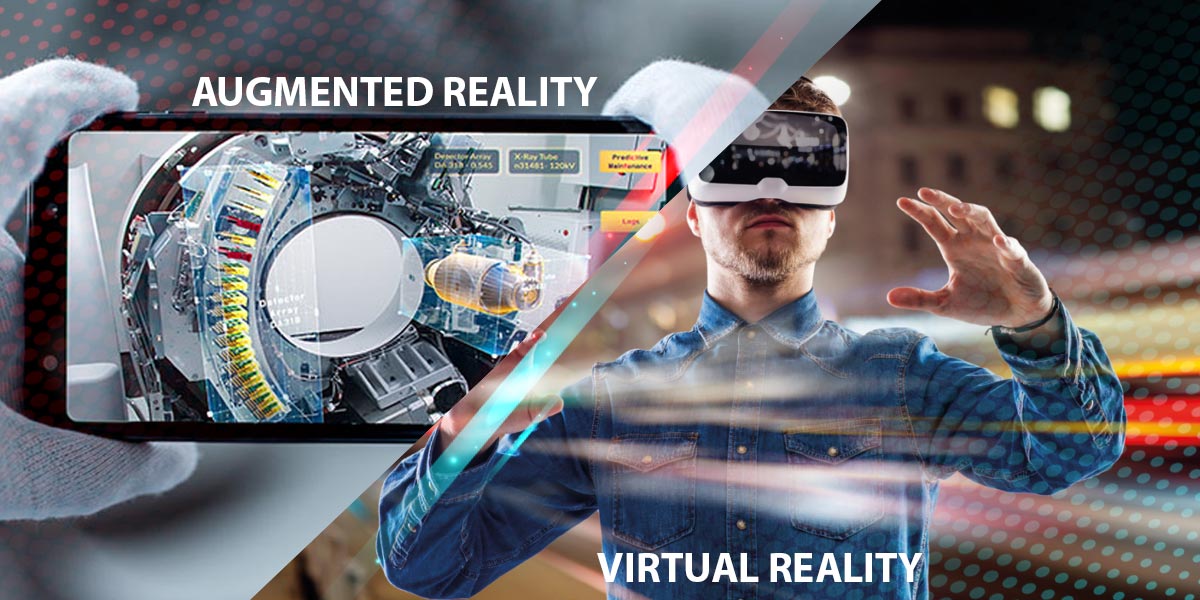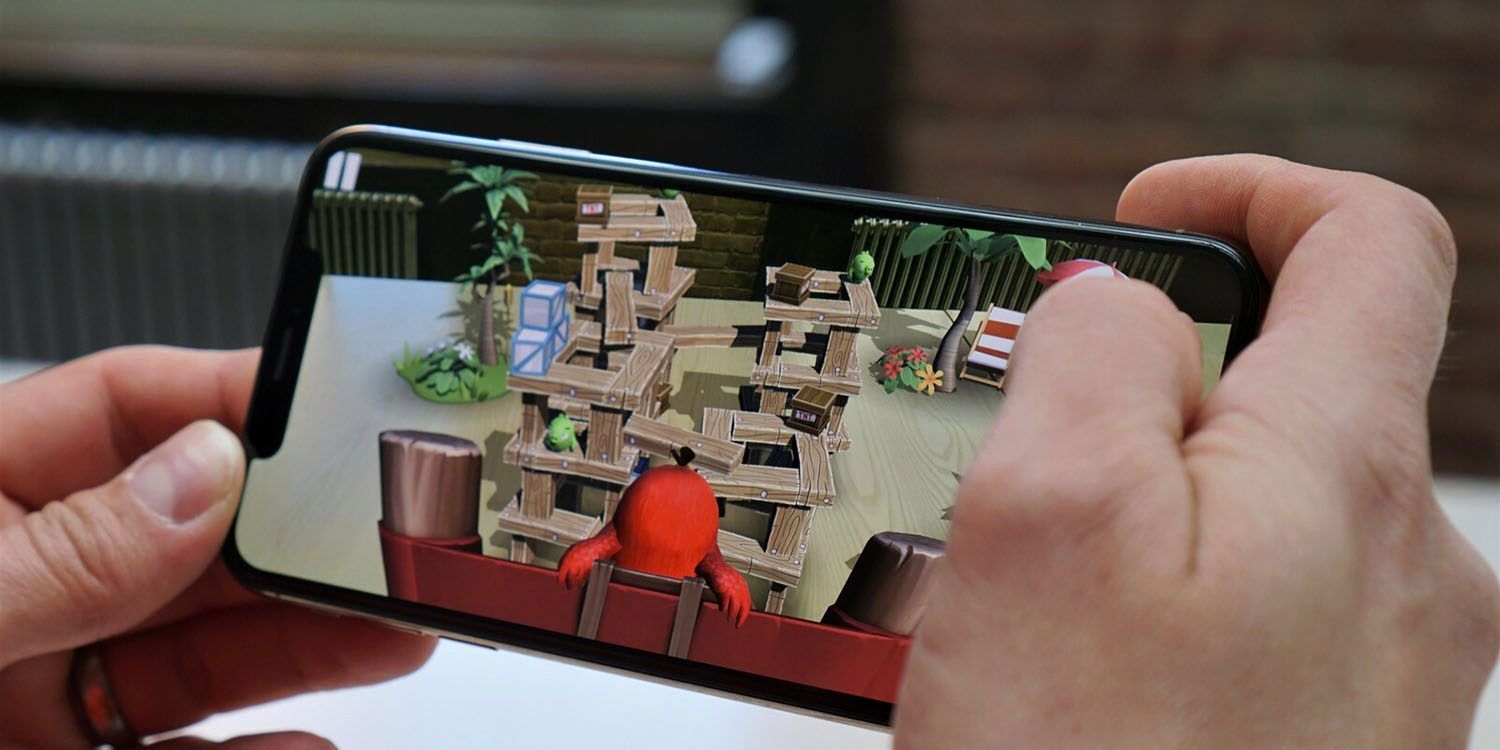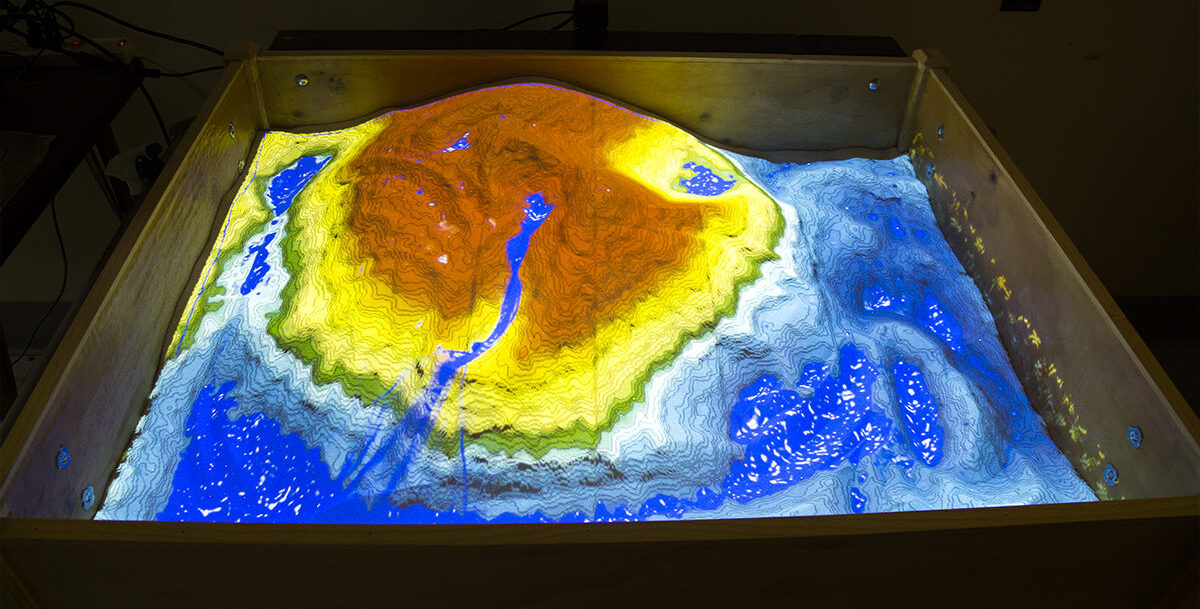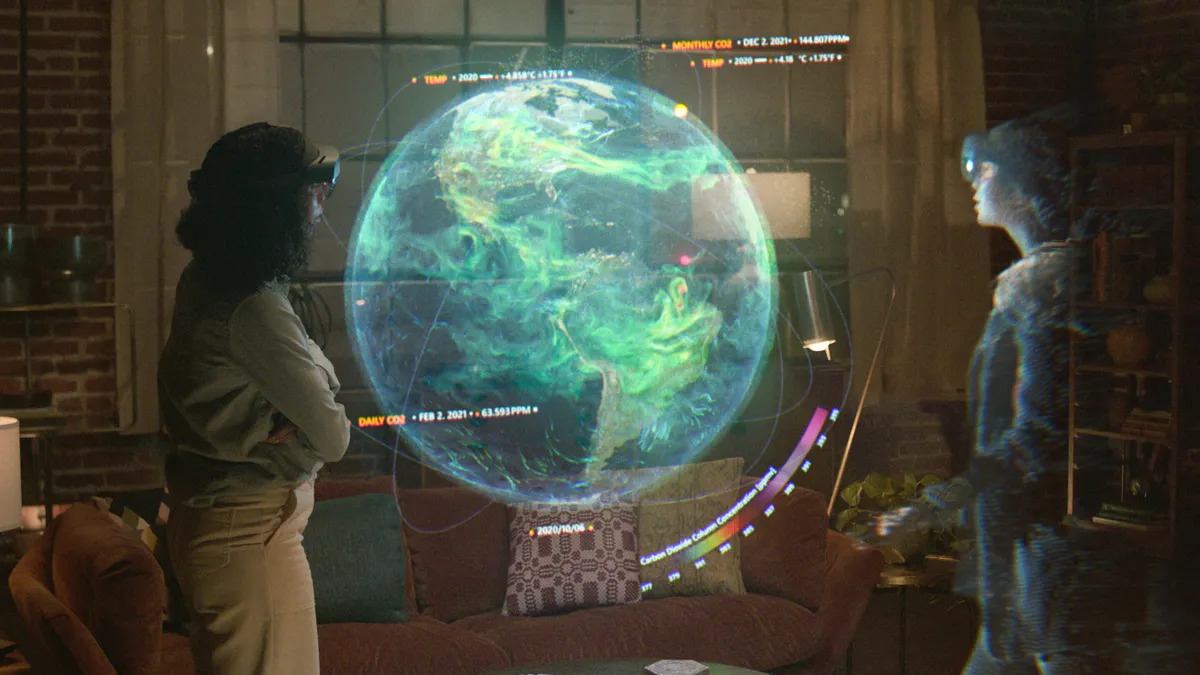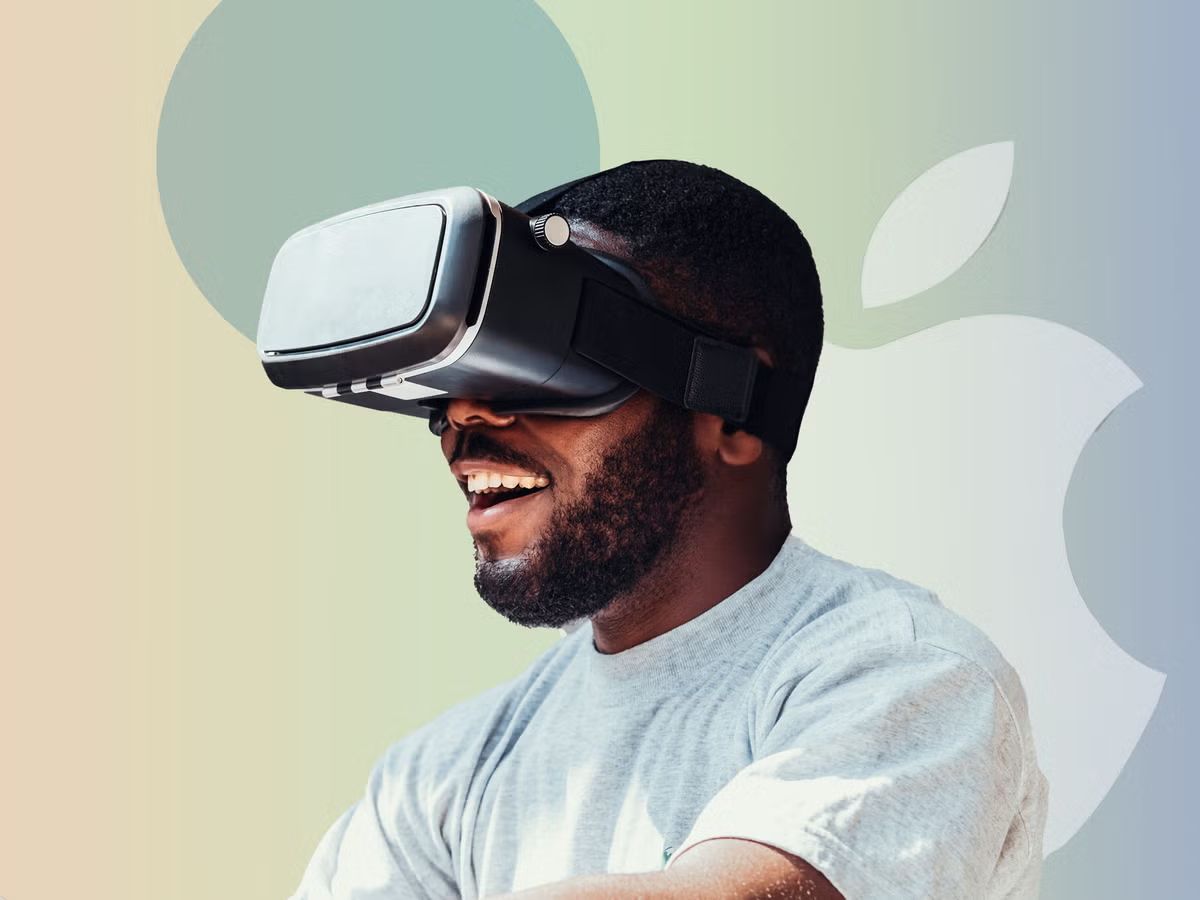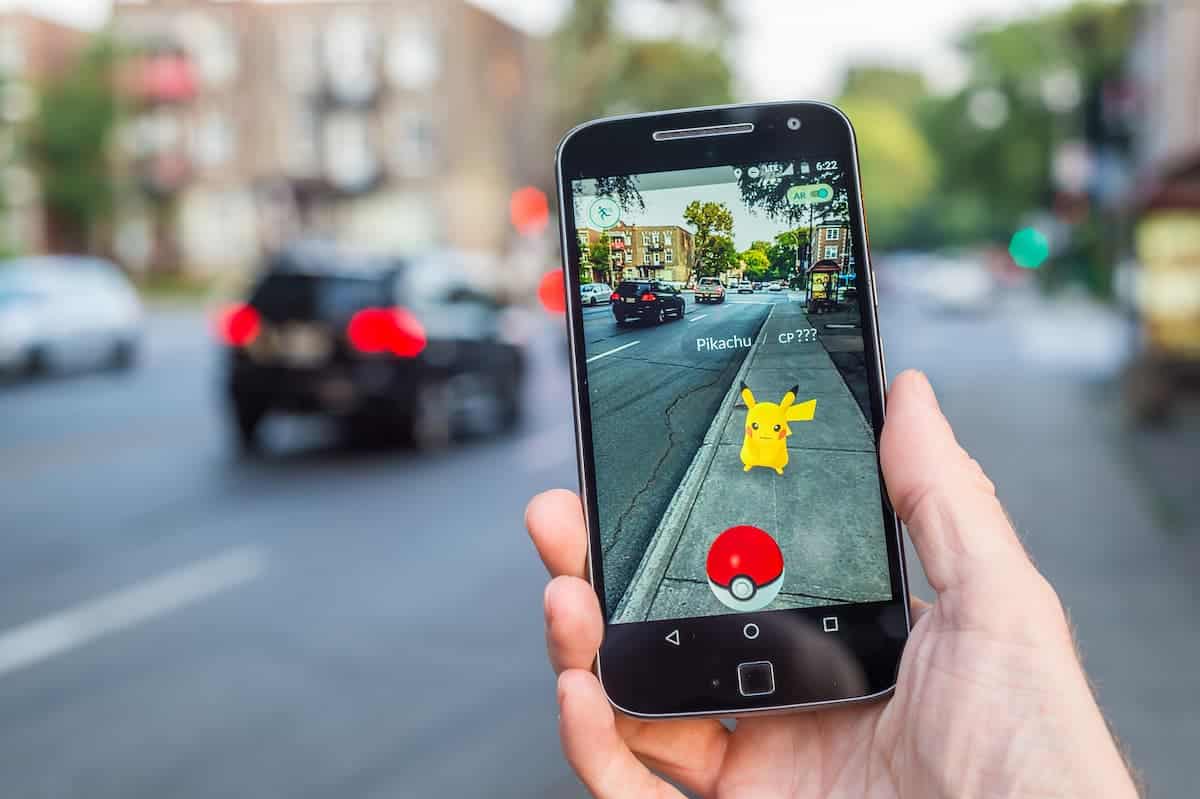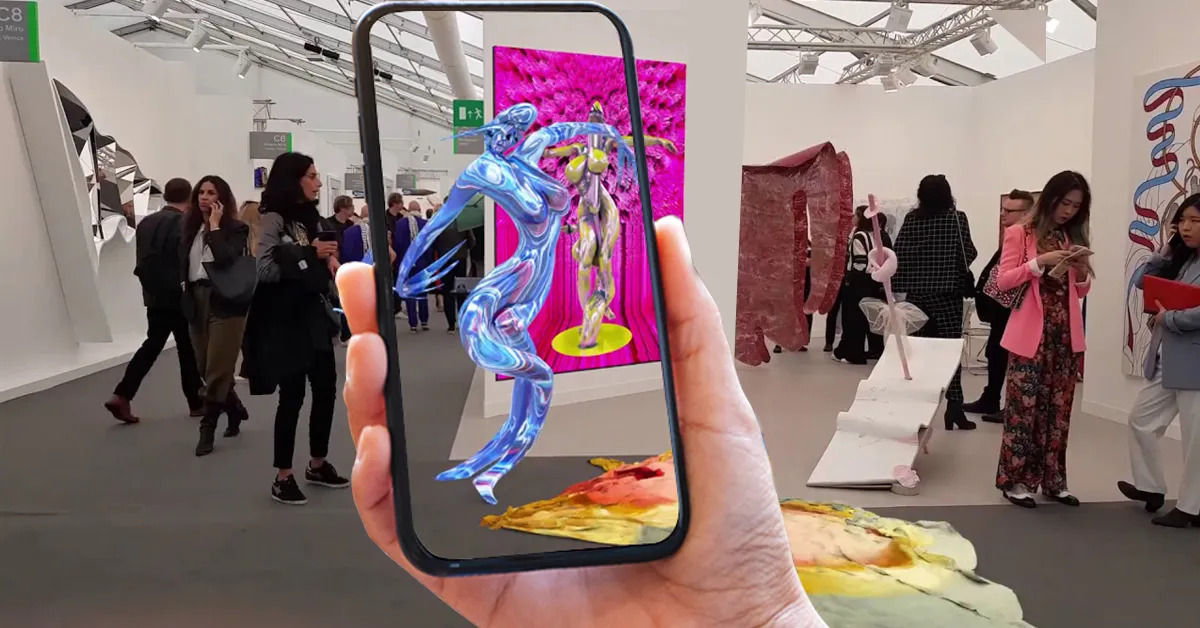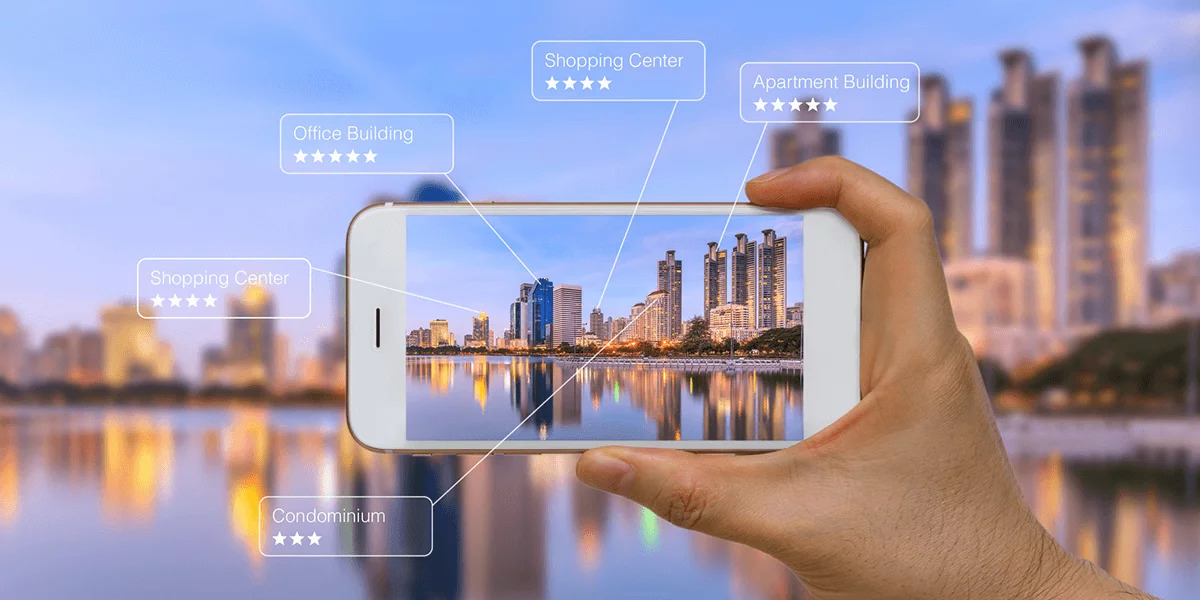Introduction
Welcome to the exciting world of augmented reality (AR) and virtual reality (VR). These two cutting-edge technologies have revolutionized the way we interact with digital content and immerse ourselves in virtual environments. While AR and VR may seem similar, they have distinct differences that set them apart. In this article, we will explore the disparities between augmented reality and virtual reality, examining their definitions, technological variances, user experiences, real-world applications, and the advantages and disadvantages of each.
Augmented reality refers to the integration of digital elements into the real world, enhancing our perception of the physical environment. With AR, virtual objects are superimposed onto the real world in real-time, creating an interactive and immersive experience. On the other hand, virtual reality completely replaces the real world with a simulated environment. Immersed in this virtual realm through the use of headsets or goggles, users can explore and interact with a computer-generated world.
While both AR and VR rely on similar technologies such as computer vision, sensors, and high-quality displays, their fundamental difference lies in the way they merge digital content with the real world. AR enhances the real world, adding virtual elements to it, while VR creates an entirely artificial reality. This key distinction shapes the user experience and the potential applications of each technology.
Throughout this article, we will delve into the unique features and capabilities of augmented reality and virtual reality, highlighting the ways in which they have transformed various industries and sectors such as gaming, education, healthcare, architecture, and more. By understanding the differences between AR and VR, we can better appreciate their respective advantages and disadvantages and make informed choices when it comes to utilizing these powerful technologies.
Definition of Augmented Reality
Augmented reality (AR) refers to the blending of virtual elements with the real world, enhancing our perception and interaction with our surroundings. It overlays digital information such as images, animations, and text onto the physical environment in real-time. AR technology utilizes devices like smartphones, tablets, smart glasses, and wearable gadgets to superimpose virtual objects onto the real world, providing users with an enhanced and immersive experience.
The key principle of augmented reality is the ability to merge the virtual and real world seamlessly. This is achieved through computer vision, which involves analyzing and understanding the real-world environment, and then projecting virtual content onto it. The technology tracks the position and orientation of the user’s device to ensure that the virtual elements align accurately with the user’s perspective.
AR can be classified into three main categories:
- Marker-based AR: This type of AR relies on specific markers or triggers, such as QR codes or images, to determine the position and orientation of virtual objects. When the device recognizes the marker, it superimposes the corresponding digital content onto it.
- Markerless AR: Unlike marker-based AR, markerless AR does not rely on specific markers. Instead, it uses the device’s sensors, GPS, and camera to understand the user’s environment and accurately place virtual elements in the real world.
- Projection-based AR: This category of AR involves projecting virtual content onto physical objects or surfaces. It uses projection technology to display interactive visuals on everyday objects like tables, walls, or floors, creating an augmented experience.
Augmented reality has gained significant popularity across various industries. In the gaming industry, for example, AR has brought virtual characters and objects into real-world environments, allowing players to interact with them in a more immersive and engaging way. In education, AR has transformed the learning experience by bringing textbooks to life with interactive 3D models, animations, and simulations. From healthcare to architecture to tourism, augmented reality has opened up new possibilities and revolutionized the way we perceive and interact with the world around us.
Definition of Virtual Reality
Virtual reality (VR) refers to the creation of an artificial, computer-generated environment that simulates a realistic and immersive experience for users. Unlike augmented reality, virtual reality completely replaces the real world, transporting users to a simulated environment that can be entirely fictional or based on real-world locations.
To experience virtual reality, users typically wear special headsets or goggles that completely cover their eyes and ears, blocking out the real-world stimuli. These devices create a 3D visual and auditory environment, giving users a sense of presence and immersion in the virtual world. In addition to headsets, VR systems often include handheld controllers or motion-tracking devices that allow users to interact with and navigate through the virtual environment.
The technology behind virtual reality involves rendering high-resolution computer-generated graphics at a high frame rate to create a realistic and seamless experience. The user’s movements and actions are tracked and translated into the virtual world, allowing them to explore and interact with the digital environment.
There are several types of virtual reality, including:
- Non-Immersive VR: This type of VR involves viewing a computer-generated environment on a screen, such as a computer monitor or a smartphone. While it provides a visual representation of the virtual world, it lacks the immersive qualities of other VR systems.
- Semi-Immersive VR: This form of VR offers a more immersive experience by utilizing devices such as head-mounted displays or large projection screens. Users can interact with the virtual environment, but their physical movements and actions may not be fully tracked.
- Fully Immersive VR: This is the most advanced and immersive form of virtual reality. It requires users to wear head-mounted displays that provide a 360-degree field of view and have built-in motion tracking. This allows users to freely move and interact within the virtual environment, creating a highly realistic and immersive experience.
Virtual reality has made significant advancements in various fields. In the gaming industry, VR has revolutionized gameplay, providing an unparalleled level of immersion and interaction. It has also found applications in training and simulation for industries such as aviation, medicine, and military, allowing users to practice and train in realistic virtual environments. Additionally, VR has been used for therapeutic purposes, helping individuals overcome fears and phobias through exposure therapy, and providing immersive experiences for entertainment and storytelling.
Key Differences in Technology
While augmented reality (AR) and virtual reality (VR) share similarities in terms of technology, there are key differences that set them apart in terms of how they merge digital content with the real world or create entirely simulated environments. Let’s explore some of the primary technological differences between AR and VR:
1. Integration of Real World: AR technology integrates virtual elements into the real world by overlaying digital information onto the user’s surroundings. This is achieved through computer vision, which analyzes the user’s environment and accurately places virtual objects in real-time. VR, on the other hand, completely replaces the real world with a simulated environment, creating a fully immersive experience.
2. Display Devices: AR typically utilizes devices such as smartphones, tablets, smart glasses, or wearable gadgets with transparent or semi-transparent screens. These devices allow users to see both the real world and the superimposed virtual content. VR, however, requires dedicated headsets or goggles that fully cover the user’s eyes and ears, blocking out the real world and providing a fully immersive visual and auditory experience.
3. User Interaction: In AR, users interact with virtual content through gestures, touch screens, voice commands, or other input methods, while still being able to see and interact with the physical world. VR offers more immersive interaction, enabling users to interact with the virtual environment using hand-held controllers, motion-tracking devices, or even full-body tracking equipment.
4. Sensory Experience: AR predominantly relies on visual overlays to enhance the user’s perception of reality. It augments the user’s vision with digital content, allowing them to see and interact with virtual objects within their real-world environment. VR, on the other hand, provides a multi-sensory experience by stimulating vision, hearing, and sometimes even touch, providing users with a heightened sense of presence and immersion in the virtual world.
5. Application Development: Developing AR experiences typically involves leveraging software development kits (SDKs) that provide tools for real-time tracking, mapping, and rendering of virtual content. This enables developers to create AR apps that can run on a variety of devices. VR experiences, on the other hand, often require more advanced development tools and techniques to create realistic 3D environments, as well as optimize performance to ensure a smooth and immersive experience.
By understanding these technological differences, we can appreciate the unique capabilities and limitations of augmented reality and virtual reality. Each technology offers distinct user experiences and potential applications, making them valuable tools for various industries, including gaming, education, healthcare, architecture, and many more.
User Experience Comparison
The user experience of augmented reality (AR) and virtual reality (VR) differs significantly due to their distinctive approaches in merging digital content with the real world or creating fully simulated environments. Let’s compare the user experiences of AR and VR:
1. Augmented Reality (AR): AR enhances the real-world experience by overlaying virtual elements onto the physical environment. This integration allows users to interact with both the virtual and real world simultaneously, providing a unique and blended experience. Users can see and interact with virtual objects superimposed on their real surroundings, enabling them to seamlessly integrate digital information into their daily activities. AR offers a more context-aware experience, allowing users to access relevant information, such as directions, product details, or real-time data, without disrupting their engagement with the real world.
2. Virtual Reality (VR): VR offers a highly immersive experience by completely replacing the real world with a simulated environment. Users are transported to a virtual realm, where they can explore and interact with computer-generated objects and scenarios. The sense of presence in VR is incredibly strong, as users perceive themselves as physically present within the virtual environment. They can look around in 360 degrees, move in the virtual space, and engage with the surroundings using hand-held controllers or motion-tracking devices. VR provides a higher level of immersion, enabling users to escape reality and fully immerse themselves in an artificial world.
The unique user experiences of AR and VR lend themselves to different applications:
– AR is particularly useful in scenarios where users need to enhance their real-world experiences with additional information or virtual objects. For example, AR can be applied in gaming to overlay virtual characters or objects onto the real environment, creating an interactive and dynamic gameplay experience. In industries like architecture and interior design, AR can help visualize and explore virtual designs within real-world spaces.
– VR is well-suited for applications that require complete immersion and the ability to simulate diverse environments. In gaming, VR can transport players into virtual worlds, providing them with a fully interactive and immersive gaming experience. In training and simulation, VR can replicate real scenarios, enabling users to practice and learn in a realistic, risk-free environment. Additionally, VR has been used for therapeutic purposes, such as managing pain, treating phobias, and promoting relaxation.
While AR keeps users connected to the real world and enhances their existing surroundings, VR offers a more detached and fully immersive experience. The choice between the two depends on the desired level of immersion, the goals of the application, and the context in which the technology will be utilized.
Ultimately, both AR and VR provide exciting opportunities for enhancing user experiences and transforming various industries. By understanding and leveraging the unique qualities of each technology, developers, businesses, and users can explore new realms of interaction and immersion.
Real-World Applications of Augmented Reality
Augmented reality (AR) technology has made significant strides in various industries, transforming the way we interact with the world around us. Let’s explore some of the real-world applications of AR:
1. Gaming: AR has revolutionized the gaming industry by bringing virtual characters and objects into the real world. Games like Pokémon Go have captivated millions of players who use their smartphones to capture virtual creatures in physical locations. AR gaming enhances the gaming experience by encouraging players to explore their surroundings and interact with virtual elements in a more immersive manner.
2. Education and Training: AR has tremendous potential in education, offering interactive and engaging learning experiences. Textbooks can come alive with 3D models and animations to help students visualize complex concepts. AR can also simulate virtual laboratory experiments, allowing students to conduct experiments safely and explore different scientific phenomena. Additionally, AR can be used in job training, providing hands-on simulations and guidance for various industries like healthcare, manufacturing, and aviation.
3. Architecture and Design: AR has transformed the way architects and designers conceptualize and present their ideas. With AR, professionals can superimpose 3D models of buildings or interior designs onto real environments, enabling clients to visualize the final product before construction begins. This technology allows for a better understanding of scale, materials, and overall aesthetics, improving communication and decision-making during the design process.
4. Medical and Healthcare: Augmented reality has found applications in healthcare, assisting in surgeries, training medical professionals, and enhancing patient care. Surgeons can use AR overlays to visualize and navigate complex anatomical structures during operations, enhancing precision and reducing risks. Medical students can benefit from AR simulations to practice procedures and gain practical experience in a controlled environment. AR can also provide real-time patient data and instructions to healthcare providers, enhancing decision-making and improving patient outcomes.
5. Retail and E-commerce: AR has revolutionized the retail industry by providing interactive and immersive shopping experiences. Customers can use their smartphones to virtually try on clothes, see how furniture fits in their homes, or visualize products before making a purchase. AR enhances the shopping experience by providing additional product information, personalized recommendations, and the ability to make informed decisions.
These are just a few examples of the numerous real-world applications of augmented reality. As the technology continues to develop, AR has the potential to enhance productivity, entertainment, communication, and various aspects of our daily lives. The versatility and accessibility of AR make it an exciting and transformative tool across multiple industries.
Real-World Applications of Virtual Reality
Virtual reality (VR) technology has opened up a world of possibilities across various industries, transforming the way we experience and interact with digital content. Let’s explore some of the real-world applications of VR:
1. Gaming and Entertainment: One of the most well-known and popular applications of VR is in the gaming industry. VR gaming provides an immersive and interactive experience, allowing players to step into virtual worlds and engage with their surroundings. Players can explore new environments, participate in adrenaline-pumping adventures, and interact with virtual characters in a way that feels incredibly real.
2. Training and Simulation: VR has immense potential in training and simulation, enabling users to practice tasks and scenarios in a controlled and safe environment. Industries such as aviation, military, healthcare, and emergency services use VR to train personnel in realistic simulations. This technology allows trainees to develop skills, improve decision-making, and experience high-pressure situations without the risks associated with real-world training.
3. Architecture and Design: VR is revolutionizing the architecture and design fields by providing immersive visualization experiences. Architects and designers can create virtual walkthroughs of buildings or interior spaces, allowing clients to experience and provide feedback before construction begins. VR enables stakeholders to better understand spatial relationships, design elements, and overall aesthetics, enhancing the communication and decision-making process.
4. Healthcare and Therapy: VR is being used in healthcare for various purposes, including pain management, rehabilitation, and exposure therapy. Patients experiencing pain can be immersed in relaxing virtual environments to distract and alleviate discomfort. Rehabilitation programs can incorporate interactive VR exercises to improve motor skills and aid recovery. VR is also utilized in exposure therapy to treat phobias and anxieties by simulating controlled and safe environments where patients can gradually confront their fears.
5. Virtual Tourism and Exploration: VR allows users to explore new places and experience virtual tourism. Users can virtually visit landmarks, museums, or cities they may not have the opportunity to physically travel to. 360-degree videos and VR experiences provide a sense of presence, enabling users to immerse themselves in different cultures and environments from the comfort of their homes.
These are just a few examples of the numerous real-world applications of virtual reality. As technology continues to evolve and become more accessible, VR has the potential to transform various industries, providing immersive experiences that were once unimaginable. The ability to create simulated environments and transport users to new realms opens up endless possibilities for entertainment, education, training, and beyond.
Advantages and Disadvantages of Augmented Reality
Augmented reality (AR) technology has numerous advantages that have propelled its adoption in various industries. However, like any technology, AR also has its disadvantages. Let’s explore the advantages and disadvantages of augmented reality:
Advantages of Augmented Reality:
- Enhanced User Experience: AR enhances the user experience by integrating virtual elements into the real world, creating a more interactive and immersive environment.
- Improved Learning and Education: AR has the potential to transform education by providing interactive and engaging learning experiences. It can visualize abstract concepts, offer simulations, and provide real-time feedback to enhance understanding.
- Increased Efficiency in Industries: AR has been adopted in industries such as manufacturing and logistics to improve productivity and reduce errors. Task-specific information, instructions, and alerts can be overlaid on physical objects, guiding workers and reducing the need for constant reference to manuals or screens.
- Enhanced Visualization and Design: AR enables architects, designers, and engineers to visualize and present their designs in a more immersive and realistic manner. It allows stakeholders to better understand spatial relationships and make more informed decisions.
- Improved Customer Engagement: Businesses can use AR to create interactive and personalized experiences for their customers. AR enhances marketing campaigns, allowing customers to virtually try products before purchasing or providing additional information through interactive overlays.
Disadvantages of Augmented Reality:
- Technological Limitations: AR technology is still evolving, and there may be limitations in terms of hardware capabilities, tracking accuracy, and visual realism. Processing power, battery life, and connectivity can also impact the overall user experience.
- Privacy Concerns: As AR evolves, privacy concerns arise due to the potential for capturing and storing personal data. Overlaying contextual information onto people or objects raises questions about privacy rights and data security.
- Physical and Mental Implications: AR experiences may cause physical discomfort, fatigue, or motion sickness, especially if the virtual and real-world movements are not perfectly synchronized. Extended use of AR devices may also lead to eyestrain or other visual disturbances. Additionally, prolonged exposure to AR may impact mental well-being, as individuals may become too reliant on the technology or face issues of disconnection from reality.
- Cost: Implementing AR systems can be costly, especially for businesses that require specialized hardware or custom-built solutions. Costs for development, maintenance, and training should be considered when adopting AR technologies.
- Legal and Ethical Concerns: As AR expands, legal and ethical considerations arise. Issues such as privacy, intellectual property rights, and the responsible use of AR technology will require careful regulation and ethical guidelines.
Despite the disadvantages and challenges associated with augmented reality, its numerous advantages and potential applications make it an exciting and transformative technology in various industries. As the technology continues to evolve and overcome limitations, AR is expected to become more accessible and integrated into our daily lives.
Advantages and Disadvantages of Virtual Reality
Virtual reality (VR) has brought about significant advancements in various industries, providing users with immersive and engaging experiences. However, like any technology, VR has its advantages and disadvantages. Let’s explore the advantages and disadvantages of virtual reality:
Advantages of Virtual Reality:
- Immersive and Realistic Experiences: VR technology creates a sense of presence, immersing users in realistic virtual environments. This level of immersion enhances the overall user experience, making it ideal for entertainment, gaming, and simulation-based training.
- Enhanced Training and Education: VR allows users to engage in realistic simulations and scenarios, providing hands-on training experiences. This technology is particularly beneficial for industries such as aviation, medicine, and military, where practitioners need to learn and practice in environments that are difficult or costly to recreate.
- Therapeutic and Rehabilitation Benefits: Virtual reality has been utilized in therapeutic settings, such as phobia treatment and pain management. By creating immersive and controlled environments, VR can help individuals confront their fears or distract them from acute pain, providing therapeutic benefits.
- Virtual Collaboration: VR enables remote collaboration, allowing individuals from different locations to interact and collaborate within a shared virtual environment. This technology has the potential to transform how teams work together, regardless of physical distance.
- Experiential Marketing: VR has become a powerful tool for marketing, enabling businesses to create interactive and memorable experiences for their customers. Brands can engage audiences in virtual experiences that showcase products, services, or events in a unique and immersive way.
Disadvantages of Virtual Reality:
- Cost and Accessibility: VR equipment and technology can be costly, making it less accessible for widespread use. The initial investment required for high-quality VR systems, including headsets and capable computers, can limit adoption.
- Physical and Psychological Side Effects: Prolonged VR use can cause physical discomfort, such as eye strain, dizziness, and nausea, commonly known as simulator sickness. It can also blur the lines between virtual and real worlds, potentially leading to psychological issues or disconnection from reality.
- Content Limitations: The availability and quality of VR content can vary across different platforms and applications. Limited content options may hinder user engagement and limit the overall appeal and longevity of VR experiences.
- Social Isolation: As VR provides intense immersion, users may be isolated from their physical surroundings and social interactions. Excessive and prolonged use of VR may lead to a reduction in face-to-face social interaction, potentially impacting mental well-being.
- Technological Limitations: VR technology is constantly evolving and faces challenges such as graphic quality, processing power, and the need for wireless and user-friendly equipment. Advancements in these areas are necessary for a seamless and enjoyable VR experience.
Despite the limitations and challenges associated with virtual reality, its advantages and potential applications make it a remarkable technology in various fields. As the technology continues to advance and become more accessible, addressing these limitations will pave the way for broader adoption and utilization of VR in everyday life.
Conclusion
Augmented reality (AR) and virtual reality (VR) are two transformative technologies that have revolutionized the way we interact with digital content and immerse ourselves in virtual environments. While AR enhances the real world by overlaying virtual elements onto it, VR creates fully simulated environments that replace the real world. Each technology has its own unique advantages and disadvantages, making them suitable for different applications.
AR has found its place in gaming, education, architecture, healthcare, and retail, enhancing user experiences, improving learning outcomes, and increasing productivity. It blends the digital and real-world seamlessly, providing users with additional information and virtual objects in their real surroundings. On the other hand, VR has transformed gaming, training, design, healthcare, and entertainment industries by providing immersive and realistic experiences. It transports users to virtual worlds, allowing them to interact and engage with digital content in a way that feels incredibly real.
Though AR and VR have made significant strides, they still face technological limitations, including equipment costs, tracking accuracy, and potential side effects such as discomfort or isolation. Privacy concerns, content limitations, and accessibility issues also need to be addressed for wider adoption and acceptance.
Despite these challenges, both AR and VR offer exciting opportunities for various industries, unlocking new forms of engagement, learning, and entertainment. As technology continues to evolve and mature, we can expect to see even more innovative applications and advancements in both AR and VR.
In conclusion, the advent of augmented reality and virtual reality has transformed our perceptions and experiences, blurring the boundaries between the physical and digital worlds. The ongoing development and adoption of these technologies will undoubtedly shape our future, enhancing education, entertainment, productivity, and many other facets of our lives.







